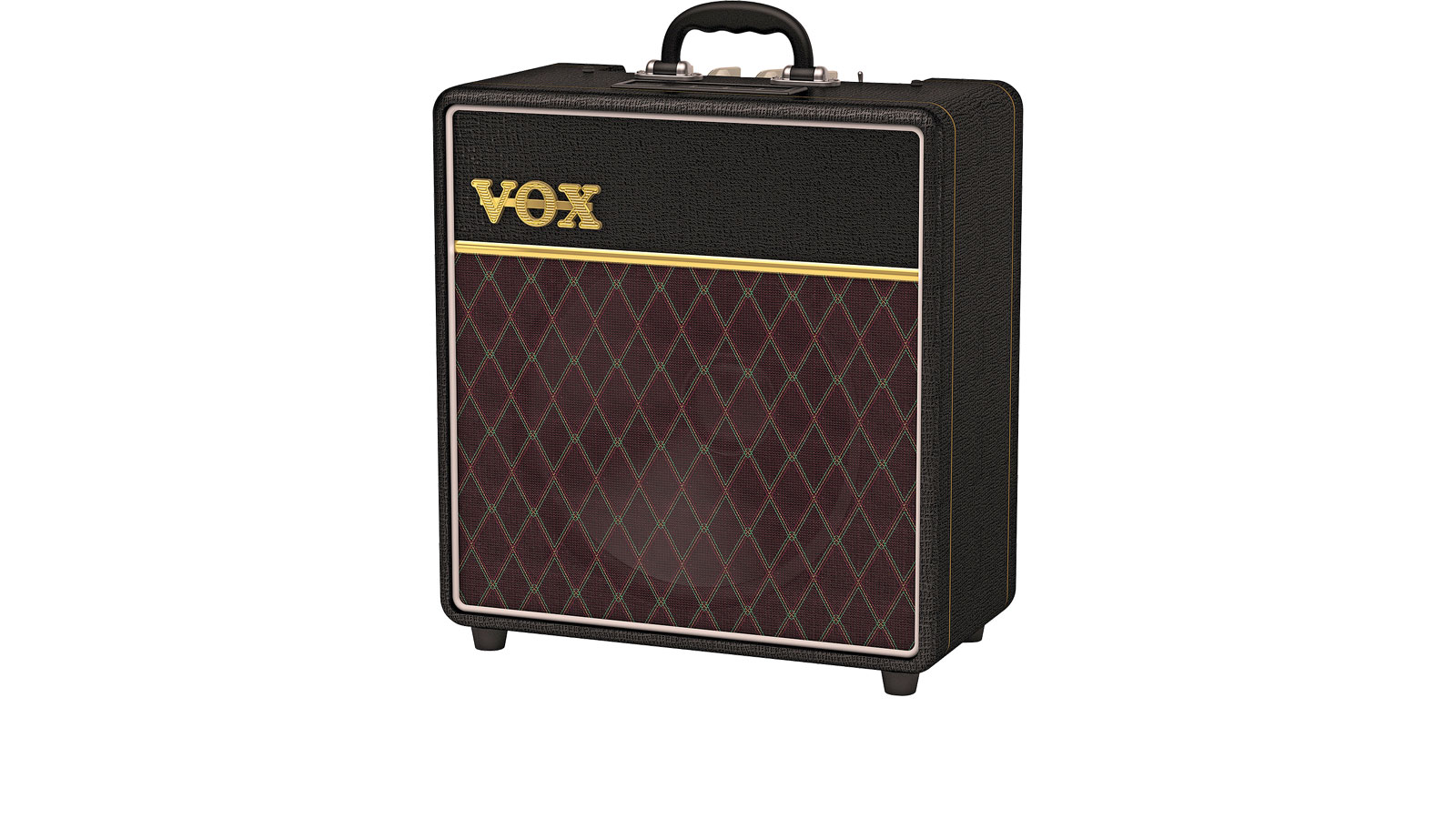MusicRadar Verdict
Classic Vox clean and overdrive sounds in a very portable package.
Pros
- +
Great for lower-volume environments. Early Vox clean sounds to higher gain tones. Good with a decent humbucker.
Cons
- -
Ventilation not very effective.
MusicRadar's got your back
Introduced with the AC15 back in 1958, Vox's AC4 is one of the original British guitar amplifiers - in fact, the AC part of the name refers to Alternating Current mains power, which not all areas of the UK had back then.
Originally called the AC2, Vox renamed it the AC6 and then the AC4 in around 1962, with no significant changes to the circuit, which featured a built-in tremolo and three controls for volume, tone and speed.
"Used at lower gain levels, the AC4's clean sounds are typical of what you might expect to hear from an early Vox"
The modern version has a completely new circuit, and Vox also upgraded the driver to a proper 10-inch Celestion loudspeaker. Now, it's gone a step further by releasing a 12-inch version, appropriately called the AC4C1-12.
While the AC4 looks similar to a mid-1960s product, the internals are significantly different from the originals, which used an EF86 preamplifier and an EZ80 rectifier alongside a single EL84 power valve. The EL84 remains and is now powered by a silicon rectifier and driven with the more common but less troublesome 12AX7/ECC83 in the preamp.
The circuitry is printed-circuit based, using a non-plated board in a simple L-shaped steel chassis. Alongside the single-input jack socket, there are chicken head knobs for preamp gain, bass, treble, and a master volume.
Because the AC4 is a pure single-ended Class A design, the EL84 runs hot - very hot in fact - with a lot of heat conducted to the control panel. There's ventilation, but it's not very effective. This apart, the AC4 is a good-looking and generally well-made little amp.
Sounds
Sonically, the AC4 is well behaved, with just a faint background hum - something common to many single-ended designs. We tried it with a Strat fitted with regular-output Duncan Alnico Pro II pickups (Hank-approved clarity for vintage Shadows stuff ) and a PAF-loaded Les Paul Standard.
Used at lower gain levels, the AC4's clean sounds are typical of what you might expect to hear from an early Vox: a boxy midrange and restrained bass coupled with a zingy treble that needs to be carefully tamed.
Set that treble knob right, though, and you get the chiming chord effect that makes the AC4's bigger brother one of the great rhythm guitar amps. Turn up the gain some more, and the AC4's blues/rock alter ego appears, with a sweet singing sustain that's great for invoking the original British Invasion vibe.
Ideally, you need a decent humbucker for this, and the AC4 sounded great with our Les Paul, although vintage PAF users should note the increased gain makes unpotted pickups much more likely to squeal.
There are lots of small single-ended amps clamouring for your cash, but only a few of them have one of the most famous badges in guitardom. Ideal for home users, and great for lower-volume environments, the AC4C1-12's bigger speaker lends more authority and punch for live use.
However, for recording, we would still favour the slightly more compressed frequency response of the 10-inch version, because it's quicker and easier to dial in. Check it out soon and see if you agree.










